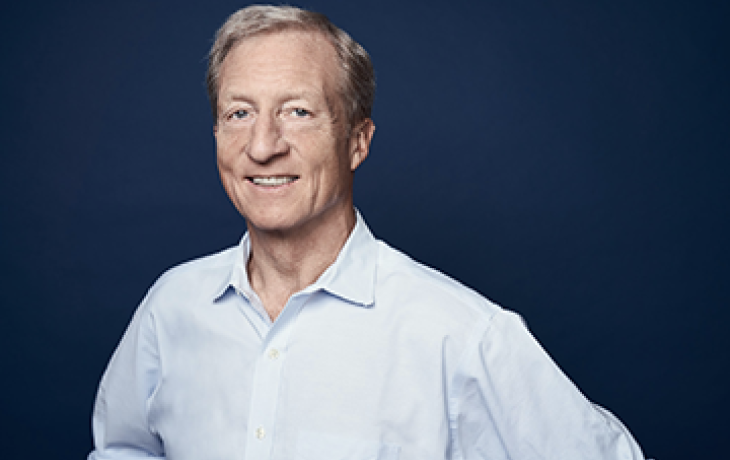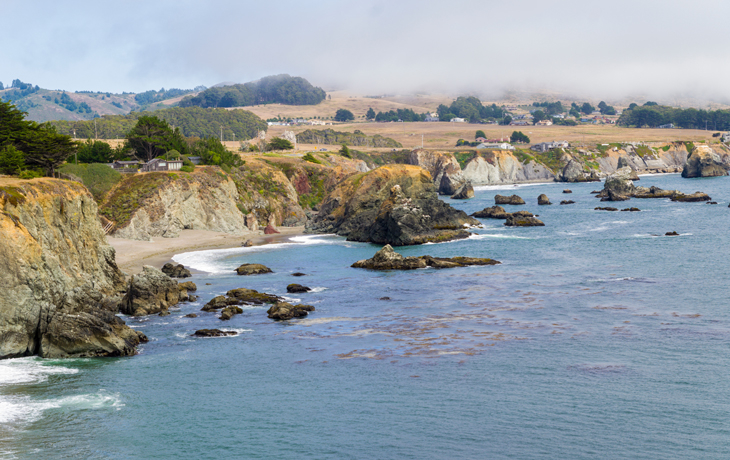ESPM professor Timothy Bowles and journalist Michael Grunwald discuss the impact of our current agricultural methods and debate the ways we can ramp up food production without causing more harm to the environment.
Climate Capitalism: A Way Forward in 2025
Tom Steyer, former presidential candidate and leading advocate for climate action, in conversation with David Ackerly, Dean of the Rausser College of Natural Resources, and David C. Wilson, Dean of the Goldman School of Public Policy.
Watch: Documenting California’s most elusive mammal
Ecosystem Management and Forestry alum Vishal Subramanyan, '24, and collaborator Prakrit Jain spoke to Berkeley News about capturing photos and video of the Mount Lyell shrew.
Mapping ocean acidification along the Pacific coast
Rachel Carlson, an Assistant Professor in the Department of Environmental Science, Policy, and Management, spoke to NPR affiliate North State Public Radio about her career in marine science and research at the Bodega Marine Laboratory run by UC Davis.
Mapping Earth’s plant life to help combat climate change
Stephanie Pau, a professor of Environmental Science, Policy, and Management and Geography, explains the science behind biogeography in 101 seconds.
How sunflowers bring all the bees to the yard
Professor Benjamin Blackman's collaborative research project on sunflowers was featured in a PBS video about how they are able to predict where and when the sun will travel each day.
The problem-solving abilities of urban raccoons
Professor Christopher Schell and postdoctoral researcher Lauren Stanton were interviewed about their research on the cognitive abilities of raccoons by ABC7 News.
The Global South faces a growing toxic waste crisis
Kate O’Neill, a professor in ESPM, spoke to PBS NewsHour about the growing toxic waste crisis in developing countries caused by discarded electronics.
2024 Rausser College Photo Contest Winners
More than 100 images were submitted to Rausser College's 50th Anniversary photo contest! View this year's winning photos here.
Meeting the Moment: Embracing Change at the National Geographic Society
Dr. Tiefenthaler discussed how the National Geographic Society draws on its legacy to shape its future, driving impactful initiatives — from international conservation projects to historic scientific expeditions — to illuminate and protect the wonder of our world.
Coexisting with California’s Urban Coyotes
Professor Christopher Schell and alum Christine Wilkinson, PhD '21, spoke to KQED about the role coyotes play in California ecosystems, and how can best coexist.
Costa Rica’s rainforests offer a window—and warning
Professor Todd Dawson is part of a collaborative team studying how climate change could reshape forest ecosystems in Costa Rica and around the world.
What wasps can teach us about engineering plants
Professor Patrick Shih and graduate student Kasey Markel’s studies of how Cynipid wasps reprogram oak trees may hold clues to new methods of engineering plants.
Spring 2024 ESPM faculty book panel
ESPM Professors Sunaura Taylor, Youjin Chung, and Michael Mascarenhas discussed their latest books with Rachel Morello-Frosch earlier this semester.
Advancing scientific understanding of calcium signaling
Recent studies led by Plant and Microbial Biology professor Sheng Luan shed light on the role calcium plays in plant immunity and defense.
Understanding the velocity of climate change
Dean David Ackerly recently spoke before the congregation of San Francisco’s Grace Cathedral about climate change and our changing world.
Mapping waters of the U.S. using new tools
ARE PhD candidate Simon Greenhill and alum Hannah Druckenmiller, PhD '21 ARE, speak with Resources for the Future about their work using machine learning to predict Clean Water Act regulation.
Karine Gibbs on microbiology and mentorship
The PMB professor and former Packard Fellow speaks about her research on complex bacterial behavior and encouraging scientists to bring their authentic selves to work
Renewable energy efforts in Nevada could be a double-edged sword
ESPM and ERG professor Meg Mills-Novoa spoke to Nevada Public Radio about her research on water scarcity and decarbonization across the Great Basin.
Vernard Lewis’ message for the future
The professor emeritus of Cooperative Extension spoke to KTVU about his career and longtime efforts to inspire youth to pursue a science education.





















